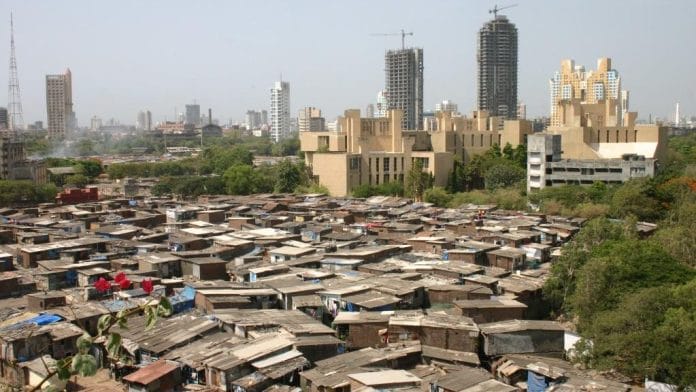New Delhi: India requires a new poverty line estimate, according to Bibek Debroy, chairman of the Economic Advisory Council to the Prime Minister (EAC-PM), who believes the current measures of poverty are either out of date or inadequate.
Speaking at the ‘Data User Conference on Household Consumption Expenditure Survey (HCES) 2022-23’ workshop organised by the Ministry of Statistics and Program Implementation (MoSPI) Wednesday, Debroy expressed his concerns over India’s use of a decade-old method to measure poverty.
“We still do not have an official poverty line that goes beyond Tendulkar,” he said. “There was Rangarajan, but it was never officially accepted, and the MPI (Multidimensional Poverty Index) is not quite a poverty line. So the question to ask is, should we now have a new poverty line to which this data can be applied?”
The Tendulkar Committee, led by economist and former National Statistical Commission chief Suresh Tendulkar, was formed by the Planning Commission in 2005 to reassess poverty estimation methods. The committee released its findings in December 2009, reporting that the rural poverty headcount ratio for 2004-05 was 41.8 percent and the urban rate was 25.7 percent. The overall national poverty rate, according to this poverty line, was 37.2 percent.
In 2012, the Planning Commission felt the need for a fresh committee to re-evaluate poverty estimation methods and recommend ways to link this estimate to eligibility and entitlements under various government initiatives. This committee was chaired by economist and former RBI governor C. Rangarajan.
The Rangarajan Committee, which presented its report in June 2014, set the poverty line at Rs 47 per day for urban areas and Rs 32 per day for rural areas. According to this report, poverty levels were 19 percent higher in rural areas and 41 percent higher in urban areas than the estimates provided by the Tendulkar Committee.
The MPI, adopted by the United Nations in 2010, is an internationally accepted index that seeks to measure poverty through a number of different indicators spanning health, education, and standard of living. The attempt is to include both the incidence and intensity of poverty.
India’s NITI Aayog has released its version of this index since 2021. According to the latest in January, 248.2 million Indians are projected to have come out of multidimensional poverty between 2013-14 and 2022-23.
However, the index does not measure income levels, which are instead clocked at an all-India and comprehensive level by the Household Consumption Expenditure Survey (HCES). The latest edition of this survey, for 2022-23, was released this month.
In his speech, Debroy also spoke about the issues surrounding surveys like the HCES.
“There are some standard perennial issues about household expenditure surveys like these,” he said. “A few of those are sort of red herrings, meaning the debate over them is sterile.”
One of these issues, he said, is the difference between the aggregate of consumption expenditure as measured in the HCES and the level of consumption expenditure as provided in the gross domestic product data provided by the government.
“That’s an issue that plagues every country in the world,” Debroy said. “To my mind, it’s a bit of a sterile debate. A second kind of debate is about inequality as defined in the distribution of personal incomes.”
He suggested that analysing the Gini coefficient — a measure of inequality — at the state-wise level might provide a clearer picture, as a national estimate could be misleading. He also suggested other improvements to the way inequality is measured, such as using the Lorenz curve method (a separate method of estimating inequality) in addition to the Gini coefficient.
(Edited by Tikli Basu)
Also read: India’s data-centre capacity set to see 12x increase by 2030, will benefit power companies too






